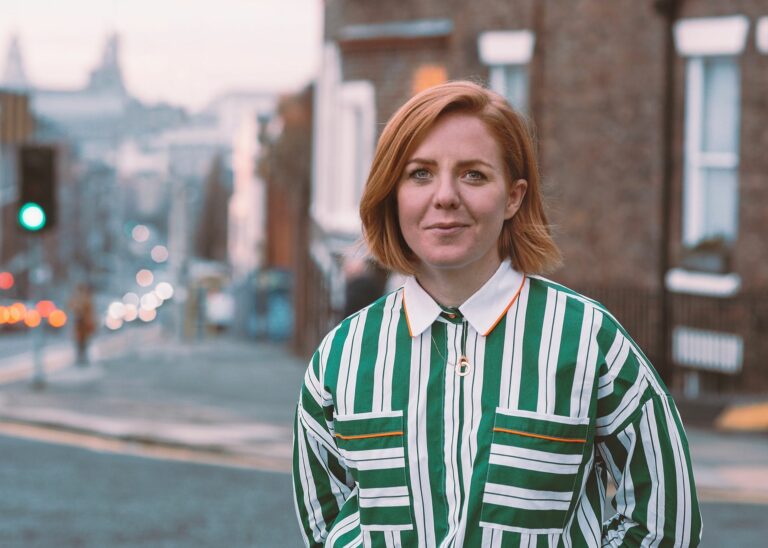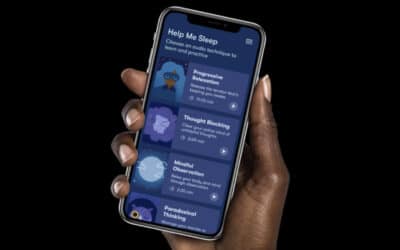Marking the start of Neurodiversity Celebration Week, Rosie Kenyon, managing director at Liverpool-based creative marketing agency Kenyons, shared her own experiences with ADHD and tips on how to support a neurodiverse workforce as a leader.
With around 20% of the world’s population classed as neurodiverse, there are lots of conversations currently taking place about the role of neurodiversity in the workplace – particularly around the skills and attributes that neurodiverse people bring to companies, and the importance of fostering an inclusive employer culture and environment…
According to the CIPD, only 10% of HR professionals specifically factor neurodiversity into their people-management practices, which points to a serious lack of awareness of how to work with, and get the best out of, neurodiverse members of the workforce.
I have combined presentation ADHD, something which has had a considerable impact on my life and how I work. In many ways, on reflection, it’s something that’s helped me to lead a creative agency, where working at pace is often necessary. I have creative ideas and I want to do a million things at once – and my brain offers me the space to think about a few too many of those things, all at once.
But it can also feel like you’re wearing roller skates and someone gives you a gentle push down a hill. You’re going pretty fast and there’s not much to hold onto to slow yourself down, so you go with it and do what you can to stay upright. You cover a lot of ground very quickly, but it isn’t always the easiest situation to handle, and you will most likely trip up along the way.
There are lots of conversations happening around neurodiversity right now, often in short, snappy content on social channels, and this can sometimes be harmful, limiting in-depth research and understanding, and bringing superficial conversations to the forefront.
That’s perhaps a conversation for another time – for now, there are some things I think can be helpful for encouraging diversity of thought in creative workplaces, beyond bean bag chairs and all that fun.
There are certainly aspects of my ADHD that make me feel ‘superhuman’ at times, but aren’t we all wired differently, with different experiences and strengths that make us who we are? The world of creativity thrives off diversity of thought but how we make space for this diversity, personally and collectively, is an important part of doing good business.
My experience might not be giving me all the answers, but it’s helped to steer the direction of my own ways of working and has allowed me to think about the best ways to support my team. Some of these considerations include…
Understanding how people work
Everyone has different ways of working – certain rituals or routines they need to follow to be at their best and most productive level. For me, that means exercise. I’m half the person I need to be if I don’t exercise, ideally at the beginning of every day.
It’s been a battle but understanding what I need to do to be at the top of my game has given me more focus and confidence. For others, that might mean making space in the day to meditate, play an instrument, or listen to a podcast. But whatever it is that helps you and your team to thrive, make time for it.
This one is certainly easier said than done and does require flexibility in the workplace, which isn’t always easy to achieve, but these rituals can be accessed in short bursts as a compromise – and routes to making these achievable should be found through plenty of two-way communication with teams.
Bringing ideas to the table
Creating an environment in which everyone can have their voice heard is important – but what’s equally as important is understanding how different people feel most comfortable expressing their opinions and ideas.
Some people come up with ideas on the spot and aren’t afraid to say them out loud. Others need time to digest and reflect before throwing their ideas into the mix. And there’ll be some who would rather collect those thoughts and send them through over email.
Making room for different styles of communication is vital in creating an understanding work environment. Employees want to contribute and share ideas, but we need to establish ways of facilitating different routes to idea generation.
Socialising outside of the office
This is a big one. There’s a lot of pressure placed on a professional’s ability to interact with their peers in a social setting. Productive teamwork during office hours is key, but expecting everyone to want to socialise in a set way can be both intimidating and limiting, particularly when alcohol is involved.
Socialising outside of working hours can be good for teams and goes a long way towards building positive relationships and employer cultures. But expecting your team to fit into one, very specific model of social interaction, without giving thought to people’s differences and preferences, can lead to tensions in the workplace.
Instilling confidence in your team
Your team’s individualisms and idiosyncrasies are what set them apart. This is something we hear a lot, but it bears repeating… Life is too short to worry about the little things you do that you think are a bit weird. We should instead worry about being decent human beings, looking after those around us and creating a positive environment in which everyone is given the tools to succeed – whatever that looks and feels like to them.
Supporting people to discover what makes them feel happy and productive benefits everyone. The more of yourself you discover and let out, the easier it is to find your people and your way of working. The more we offer reassurance and provide a place of trust, the more room we’re giving for diversity of thought.
Diversity of thought is crucial in all businesses, but especially in the creative sector. Creating a culture and environment in which everyone feels valued because of that diversity, and feels encouraged to share their ideas and work towards a common goal, is pretty vital.
We need to take time to understand ourselves and the people around us as best we can, providing safe spaces in which everyone can thrive.
When people try to work in ways that are incompatible with their wiring, they’re more likely to burn out and less likely to feel fulfilled – and we know that now is not the time to lose brilliant minds because they’ve tried to fit into a box that wasn’t made for them.
We can give a lot of lip service to these kinds of topics, and talk about big policies and practices, but in reality, it’s the smaller everyday interactions that define our workplace. Foster a culture that truly respects and supports different ways of thinking and you’re opening up a world of imagination and creativity that’s going to produce a happy business in every sense.









